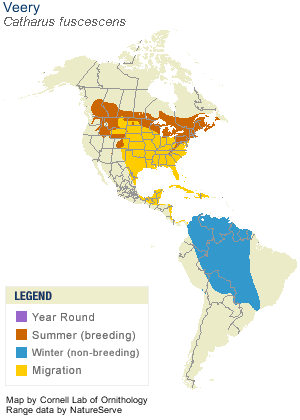Bird banding was just one of the activities the crew worked on at the Cary Institute Dr. Kara Belinsky, Ethan Duke and Cara Krieg (from NSF’s program: Research Experience for Undergraduates) were members of the crew who specifically worked on avian communication -. Birds can produce a great variety of sounds - with so much diversity, it helps to characterize individual birds.
Communication refers to the songs and calls of a bird. It is generally accepted that songs are loud vocalizations, often delivered from an exposed perch, with the intention of attracting a mate or to ward off intruders. My last post about banding explains the technique used to start the identification of a bird. Once an individual is identified, it complements the goals of studying communication because recording of vocalizations can now be attributed with known individual.
After Ethan, the sound recordist, has recorded all the calls and songs, he then converts them into sonagrams. A sonogram is useful by converting what we hear into a visual diagram of the frequency or pitch of a vocalization over time. This helps to visualize and characterize the complexity and anatomy of the song. By converting sound into something physical that we can observe and quantify, it allows researchers to study the communication of birds in detail
The song of the veery is distinctive, with complex harmonics – and sound produced from the dual ‘vocal cords’ of the bird - people find the song very beautiful. There are many questions that remain unanswered at this point. One is how does the male’s song affect female mate choice? Unpaired birds of most species typically sing all day long, and paired males sing less often. But not all calls are meant for females – there are calls that defend a territory from another intruder. Experimenting on which acoustic elements may signal the likelihood of attacking in male-male competition, Ken Schmidt discovered veeries make a soft “whisper call” when engaged in counter-singing with another males. Wondering if this functions to warn or ward off rivals. Cara Krieg and Dr. Kara Belinsky found that veeries that act more aggressively towards a mounted model (i.e., simulating an intruder) give the “whisper call” more frequently than males that act less aggressively toward the mount.
See if you can hear the “whisper call” that can be heard if you listen carefully to the recordings, and more easily when you study it on a sonagram.
Veeries have another challenge - researchers suspect that owls eavesdrop on bird songs to help them hunt. Dr. Schmidt and others have noticed that veery songs are hard to locate or judge distance to the singing bird. Have the veeries developed their complex harmonics to make it more difficult for them to be localized – its not quite jamming owls ‘radar’, but it does create difficulty. If Ken and Kara are correct, then you can thank the owls for supplying the evolutionary selective pressure that makes veeries sound so beautiful and unique! When the researchers study the complexity of the veery song and the effects that the environment has on it, they are trying to learn more about the total repertoire and vocabulary for this species. This first field season the biologist worked hard on establishing a control. With two more field seasons to come we can anticipate for the research to move along further.






















